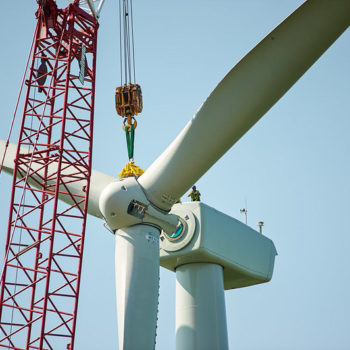In the first week of June, Germany’s government was one of the first governments worldwide to present a comprehensive stimulus package in response to the economic crisis caused by Covid-19.
The package has surprised many: with a total size of €130bn, it is larger than most observers expected. Its flagship measure, a lowering of the VAT rate during the second half of 2020, was not on many people’s radars. And the package does not include a scrappage scheme for diesel and gasoline cars, even though the powerful lobby of the automotive industry had heavily mobilized for it. These headlines are encouraging, and, looking at the details of the package, it becomes clear that its measures will not be a fundamental obstacle to a sustainable and resilient recovery from the Covid-19 crisis. At the same time, the package on its own is not capable of delivering the sustainable economy of the future. Therefore, additional measures will need to be introduced in the coming months to guide the green and digital transformation of the German economy.
As we at E3G have argued earlier, the recovery package moves Germany from an initial phase of stabilizing the situation to a phase of forward-looking measures to restart and redirect the economy. The further any country, including Germany, advances on this path, the more important it is to ensure that all measures taken are aligned with important long-term objectives such as the goal to achieve climate neutrality by 2050 at the latest. Before looking at individual measures, it is worth taking a look at the one measure that was not in the package but was heavily debated in advance – a scrappage scheme for diesel and gasoline cars.
Germany’s traditionally powerful automotive sector, together with the heads of the three federal states that are home to significant parts of the automotive industry, had asked for such a premium, which had already been part of the response to the 2008/09 economic crisis – delivering a mixed success at best. They were opposed by an environmental movement including Fridays for Future, but also by most German economists, who questioned the stimulus effects of such a measure and criticized that it would hinder the transformation of the car industry towards electric mobility. Furthermore, powerful groups in both ruling parties opposed the premium due to its negative long-term effects (Social Democrats) and the strong focus it would place on a single economic sector (Conservatives). In the end, the opponents of the measure won the day, in contrast to the 2008/09 financial crisis response, as the package does not include such financial support – a decision that, in car-loving Germany, has a significance that cannot be overstated.
At the same time, the package does include substantial financial support for the car industry, including €2.2bn for a scrappage scheme for electric vehicles and, problematically, plug-in hybrids. Overall, though, the package’s funding for the automotive sector charts a clear direction of travel: with €2.5bn for the expansion of charging infrastructure and battery manufacturing and €2bn for the transformation of the automotive sector and its supply chains away from combustion engines the package will accelerate the transition towards electric mobility in Germany, both in the factories and on the streets. In hindsight, this support could prove critical for ensuring the long-term competitiveness of the German automotive sector, which is significantly lagging behind international competitors in the transition to electric mobility.
The government is also mobilizing €9bn for investments into hydrogen, an energy carrier that many hope will resolve some of the difficulties of transitioning to climate neutrality. But hydrogen is not without difficulties itself, and the government’s strong focus on hydrogen comes at the expense of measures in other parts of the energy system. Overall, the hydrogen investments dwarf the investments planned into energy efficiency measures (€2bn) and renewable energy (no additional investments planned). Therefore, it is questionable that the money mobilized here can leverage the greatest long-term potential for the economy and the climate – especially given the fact that green hydrogen can only succeed if the wider energy transition succeeds. A further relevant measure, the capping of the renewable electricity surcharge on consumers’ bills, costing the government €11bn in total, will help accelerate the electrification of processes and increase planning security, but does only have an indirect positive effect on climate action.
Altogether, we can now see the bigger picture: the government’s package does not put obstacles in the way of the long-term transition to climate neutrality. This was not a given in advance of the announcement and is therefore a very positive development. Also, it mobilizes helpful funding in some sectors, such as for the transformation of the automotive sector. However, the alignment of this funding with the wider transition is missing. For now, this should not worry observers too much – after all, this is a stimulus package, not a climate package, though it would have been better to already implement stricter climate proofing for the funds being mobilized now, for example using the EU’s taxonomy for sustainable finance.
However, this is not the end of the story: the government has already hinted at the possibility of further spending in the future, and the fiscal space for new measures shrinks with every new investment package. Therefore, the next decisions taken by the government must include a targeted Transformation Fund, possibly building on the Future Fund that is part of the announced package, so that Germany can proceed on the way towards a climate neutral economy. If this does not happen, there is a serious risk that the possibilities offered by the current package remain unused in the long run.
This article was originially published in Agenda Publica, El Pais.


